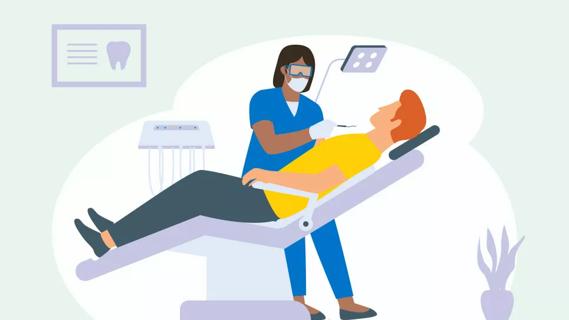Epidurals can help with the discomforts of labor and delivery — but whether you want one is entirely your choice

The lead-up to the birth of a baby is full of choices:
Advertisement
Cleveland Clinic is a non-profit academic medical center. Advertising on our site helps support our mission. We do not endorse non-Cleveland Clinic products or services. Policy
And about a zillion others.
And like many decisions when it comes to pregnancy and labor and delivery, choosing whether to opt for an epidural or a medication-free birth is mostly a matter of preference.
Epidurals have their benefits. So do unmedicated labors.
How do you weigh the pros and cons of an epidural? We talked with Ob/Gyn Selena Zanotti, MD, so you can make an informed choice.
There are some plus sides to choosing an epidural. And some of them may surprise you.
Let’s take a look.
OK, this one is fairly obvious. Pain relief is pretty clearly the top reason epidurals are chosen.
An epidural is a catheter (thin, bendy tube) that’s inserted between the vertebrae in your back that delivers — you guessed it — pain-relieving medication. The medication is a local anesthetic, which can numb the nerves in your lower body.
So, yes, epidurals can relieve pain. And that relief just might allow you to get a bit of rest before baby makes their debut.
One of the big misconceptions around epidurals, Dr. Zanotti says, is the myth that epidurals can make your labor longer.
Not necessarily. Particularly during the first stage of labor (the contractions that happen before you begin to push).
Advertisement
“When you’re experiencing pain or discomfort, often, your first instinct is to tense up, which can keep labor from progressing,” she explains. “In those cases, an epidural can help you relax your muscles so your body can keep labor moving. So, an epidural isn’t necessarily going to prolong your labor. Sometimes, it shortens it.”
This one might also come as a surprise. But large studies and meta-analyses (the pinnacle of scientific research) have shown that epidurals don’t increase your risk for a cesarean birth.
So, if a vaginal delivery is your goal, you don’t have to worry that an epidural will get in the way.
One more myth to bust here. There’s almost no time that’s too soon or too late to choose an epidural. Unless your labor is progressing mega-fast and there’s no time to call in an anesthesiologist, you can get an epidural as soon or as late as you need.
“It used to be that you couldn’t get an epidural until you were four centimeters dilated, and you couldn’t get it too late. But it’s been looked at in so many studies and now, there’s no rule for when it’s too early or too late,” Dr. Zanotti shares. “You can get it when you’re barely dilated. You go medication-free until you’re pushing. You have the control to decide what you need and when.”
An epidural is a medical intervention. And like all interventions, there can be some risks associated with it.
Let’s take a look at some of the drawbacks.
Epidurals can be an option, but not everyone is a good candidate.
If you have a bleeding disorder or a low platelet count, talk with your healthcare provider about whether an epidural is an option for you. You could be at a higher risk of an epidural hematoma — a potentially life-threatening condition where blood pools in the epidural space.
You may also be advised against getting an epidural if you’re allergic to anesthetic medications.
The thing about epidurals is that they relieve pain by numbing you — either partially or completely — pretty much from the waist down.
So, after getting an epidural, you’ll be in bed until it wears off.
“That’s why a lot will wait to get an epidural as long as they can or choose not to have one because they may not want to be restricted from doing things like walking around the room or using a birthing ball,” Dr. Zanotti shares.
That also means that when it comes time to push, your birthing position options may be limited.
If you choose an epidural, you may also receive a catheter to empty your bladder, as you won’t be able to get up to use the bathroom until the numbing effects wear off — typically, about two to four hours after it’s removed.
Advertisement
Remember what we said about epidurals not prolonging labor during the first stage?
Come time for the second stage — when you’re pushing to deliver the baby — an epidural can potentially slow things down.
“Some studies show there can be a slight delay during the second stage after having an epidural,” Dr. Zanotti reports. “Often, that’s because you may not be able to direct that pushing because you can’t feel what your body needs.”
You can end up pushing ineffectively. Or not know when it’s time to push.
Like any medication or medical procedure, epidurals can have side effects. Most of them are exceedingly rare. But they can still happen.
What are some of the most common?
Advertisement
“The risks of epidurals are very minimal,” she reassures. “And if you choose to get them, it’s because you believe the benefit of pain relief outweighs that risk.”
For some, the biggest drawback to having an epidural is that they simply prefer a medication-free birth. And that’s valid.
It’s your birthing experience after all. And as long as an unmedicated birth isn’t putting you or your baby at risk, there’s no need to opt for interventions.
Epidurals may be the option you hear most about when it comes to labor and delivery. But there are other labor pain relief options — both medicinal and non-medicinal — that can help, should you choose.
That includes practices like:
And medications like:
Whether you should include an epidural or other medicated pain relief as part of your birth plan is, in most cases, a matter of your preference.
“If you're in labor, you have choices in what you want to do, especially when it comes to labor pain relief. Everybody is different in what they can manage — and what they want to manage,” Dr. Zanotti affirms.
Advertisement
Your birth plan is a roadmap for what you expect to happen and what you think you’ll want during labor and delivery. But that doesn’t mean it’s set in stone.
Things can (and often do) change during the course of labor. You may have thought you wanted medicated pain relief but decided against it later. You may have thought a medication-free labor was the route for you, but you changed your mind.
Not a problem.
While you’re weighing your options, it’s good to leave some room for doubt. Stay open to a change of plan. Be flexible. Because you can’t know for sure what you need (or don’t need) until the time comes.
“When I counsel patients about their birth plan and what they want, I always make sure they know that we’ll do everything we can to meet their goals. But we never know what it’s going to be like or what’s going to happen,” Dr. Zanotti reassures. “So, I always encourage to keep your options open.”
Bottom line: Epidurals are safe and effective for most. But they can come with some (mostly minor) risks. Talk with your healthcare provider about your options.
In most cases, there’s no right or wrong answer. And the choice is entirely yours.
Learn more about our editorial process.
Advertisement

Spinal blocks provide complete numbing for shorter periods, while epidurals can allow for some feeling

Advances in technology and medications have made the process safer than ever

If you have naturally red hair, feeling the pain may be in your DNA

The numbness and tingling should wear off in about two hours

Ob/Gyns and midwives both care for your gynecological and pregnancy needs — which you choose depends on your health and comfort

Placenta consumption hasn’t been shown to have any health benefits, but it can cause infections

It’s common to have a bowel movement when you’re giving birth, but your care team truly doesn’t want you to be embarrassed by it

Baby’s caregivers should be up-to-date on flu, COVID-19 and Tdap vaccines to protect the newborn in their lives

The best parenting style balances enforcing rules and showing plenty of love

Tips include cutting back on sugar, focusing on exercise and managing stress

It can be harder to let go when you’ve invested time, energy and emotions — but it might be the healthier choice long term